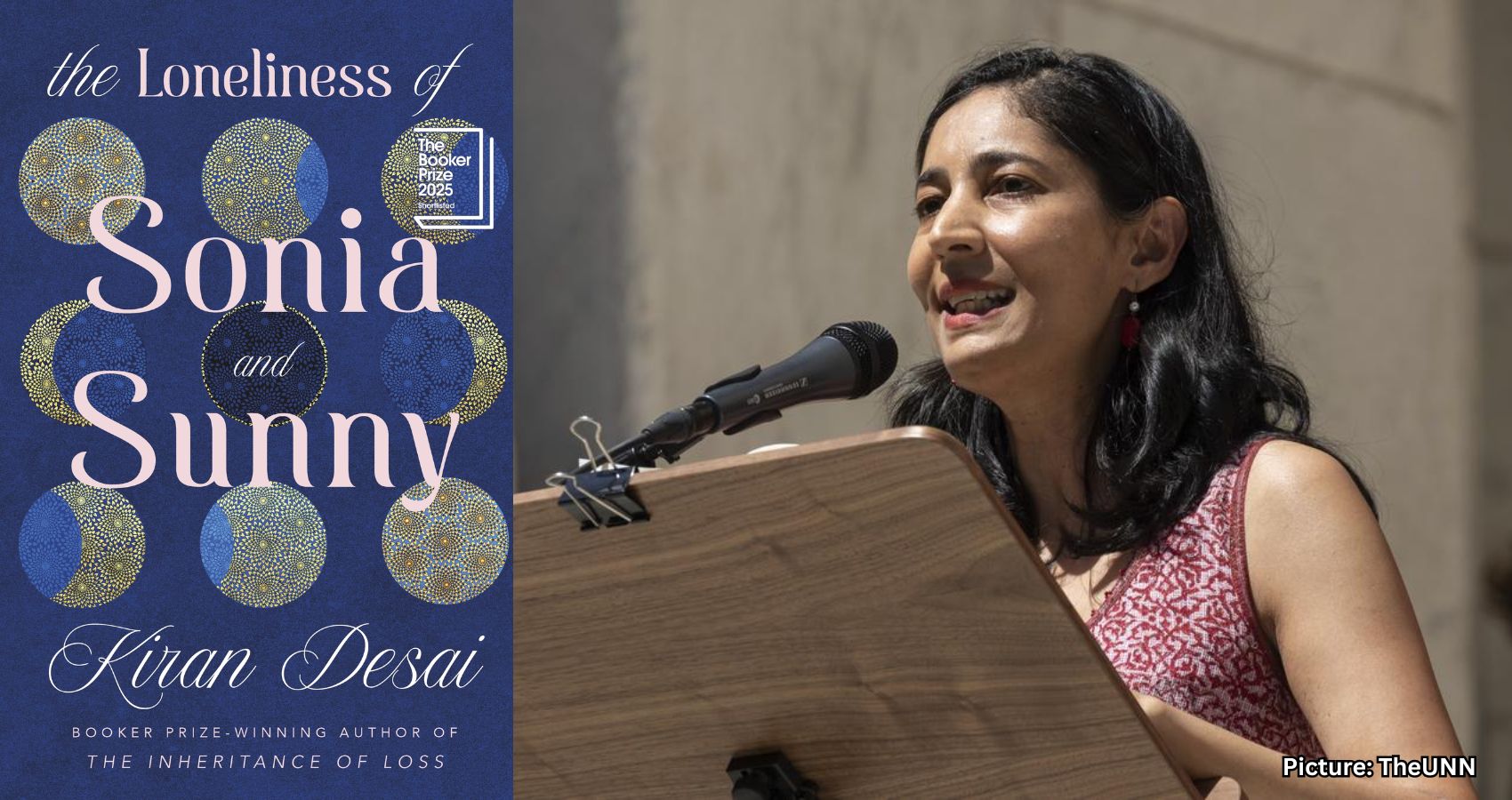Kiran Desai’s latest novel, *The Loneliness of Sonia and Sunny*, has been shortlisted for the 2025 Booker Prize, showcasing her distinctive narrative style and exploration of loneliness.
Kiran Desai’s upcoming novel, *The Loneliness of Sonia and Sunny*, has garnered significant attention after being shortlisted for the 2025 Booker Prize. In this work, Desai employs a naturalist’s eye, crafting a narrative that is both observant and immersive, transporting readers to the diverse settings she vividly describes.
Desai’s journey to this point has not been without its challenges. In the margins of an early draft of her manuscript, her mother, Anita Desai, famously wrote, “Cut. If not, shorten.” This advice came after Kiran had already reduced a staggering 5,000-page manuscript to a still-imposing 1,000 pages. The final published version, at 688 pages, has sparked debate among readers regarding its length.
During a recent event at Kepler’s Books in Menlo Park on September 21, Desai discussed her novel in an engaging conversation moderated by her friend and fellow writer, Ellen Sussman. Heather Birchall, a representative from Kepler’s, introduced the event by recalling that Desai was the youngest female winner of the Booker Prize in 2006 for her previous work, *The Inheritance of Loss*, at the age of 34.
The inspiration for *The Loneliness of Sonia and Sunny* stems from Desai’s own experiences at Bennington College in Vermont, where she encountered what she describes as a winter of “exquisite, artistic loneliness.” The novel delves into various forms of loneliness, including romantic, existential, and those arising from racial, gender, and national differences.
Set against the backdrop of privileged upper-class Indian families, the protagonists, Sonia and Sunny, are raised with the expectation of leaving India. Their families attempt to arrange a marriage for Sonia while she is a lonely college student in Vermont, and Sunny is an AP reporter in New York. However, these attempts ultimately fail, leading them to pursue their own paths.
Sonia relocates to New York, where she becomes involved with a self-absorbed and abusive artist named Ilan. Meanwhile, Sunny’s close friend, Satya, a medical student, decides to enter an arranged marriage and seeks Sunny’s assistance in selecting his bride. Fate brings Sonia and Sunny together in India, sparking a sweet but complicated romance.
Throughout their relationship, Desai illustrates how external circumstances continually pull Sonia and Sunny apart, prompting questions about whether love can truly overcome such obstacles. Both characters are portrayed as writers and wanderers, grappling with their identities and how they fit into the world. Sussman highlighted Sonia’s struggle with her writing, quoting her reflection on the creative process: “I am trying to write a book, in fact, but I feel I am circling the story.” This sentiment resonates throughout the novel, as Desai’s prose often reflects a similar circling of ideas.
While the book features moments of striking prose, such as “The train began to clop to a tabla beat,” and “An aberrant ice cube harboring a bubble of air begins to squeal in the glass and spin around like a dervish,” it also contains lengthy passages that can feel meandering. These extended musings, while occasionally meditative, sometimes detract from the narrative’s momentum.
Desai’s exploration of racial relations and justice adds depth to the story, particularly through Sunny’s experiences as a brown person navigating a predominantly white audience. A poignant moment occurs when an acquaintance warns Sunny that seeking American citizenship may alter his perspective as a reporter, suggesting that he might lose touch with the very humanity he aims to advocate for.
The narrative is punctuated by significant historical events, such as 9/11 and the destruction of the Babri Masjid, which serve to anchor the characters in specific contexts. However, these references often feel superficial, as they are more about situating the characters in time rather than directly affecting their lives.
Desai also touches on elements of magical realism, inspired by her introduction to an exhibition by Francesco Clemente. While she acknowledges the use of magical realism as a means to explore complex themes, the execution in this novel may not resonate as strongly as in other celebrated works of the genre.
Desai’s keen observational skills shine through in her descriptions of landscapes and settings. She paints vivid images of nature and architecture, such as “a forest of doves” and “water pooling in the corner of a bathroom.” However, her character descriptions tend to focus more on personality traits than physical attributes, which may leave readers wanting more depth in understanding the characters.
Among the characters, the resilient mothers stand out, each embodying different aspects of loneliness. Sonia’s mother, referred to simply as Mama, finds peace in solitude, while Sunny’s mother, Babita, believes that loneliness is the only problem worth solving. This thematic exploration of loneliness echoes contemporary discussions, such as those presented in Surgeon General Vivek Murthy’s 2021 book on the subject.
At the book signing following the event, Desai’s warmth and graciousness were evident as she engaged with fans, remarking on the “cool” Advance Reader’s Copy in hand. Her approachable demeanor leaves a lasting impression, inviting readers to wish her well on her literary journey.
Source: Original article

